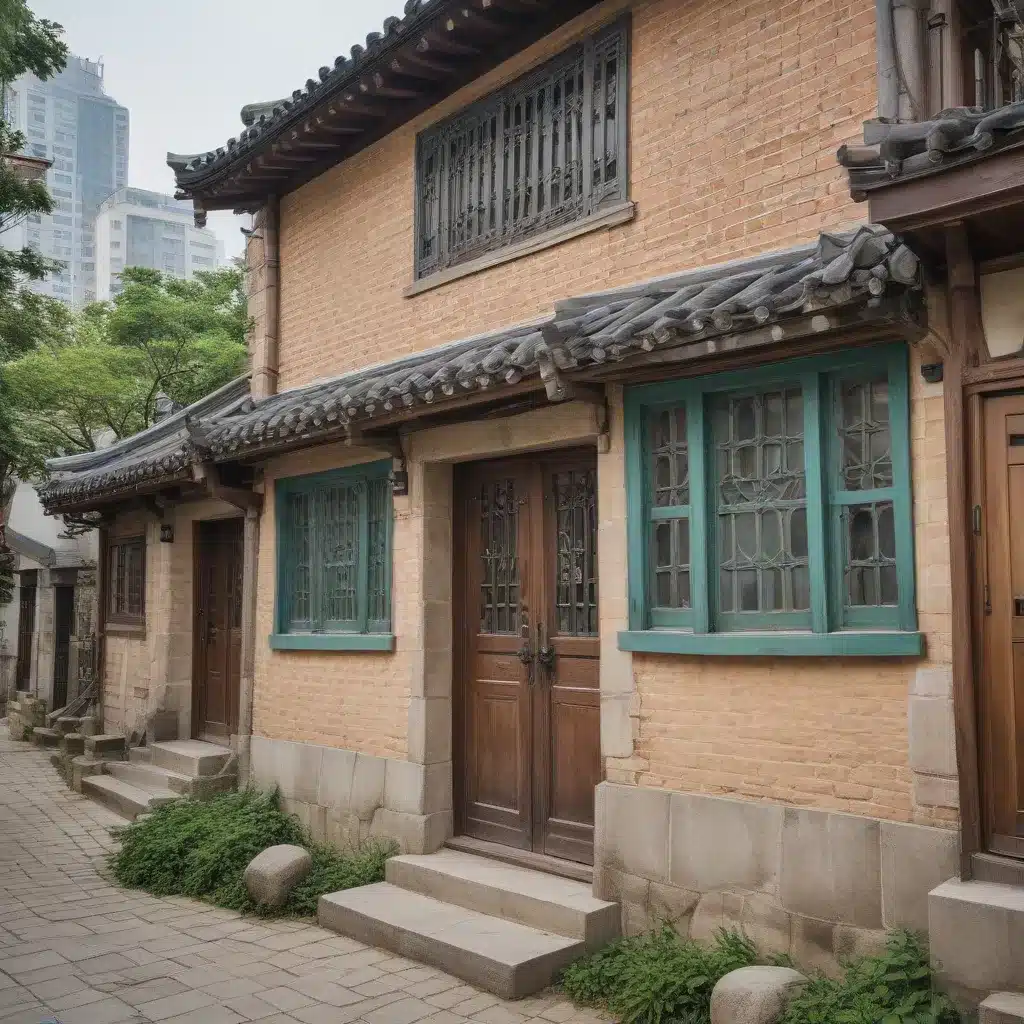
Uncovering the Secrets of an Ancient City
As I step out of the bustling streets of modern Seoul, I can’t help but feel a sense of wonder and anticipation. This metropolis, with its towering skyscrapers and neon-lit streets, is a true marvel of urban development. But there’s more to this city than meets the eye. Beneath the glitz and glamour, Seoul holds a treasure trove of hidden historic architecture, waiting to be discovered by the curious explorer.
A Step Back in Time
My journey begins in the heart of the city, where ancient palaces and temples stand as a testament to Korea’s rich cultural heritage. The Hotel Stay Inn Seoul is the perfect starting point, nestled just a stone’s throw away from some of the city’s most captivating historic sites.
As I wander through the grand gates of Gyeongbokgung Palace, I’m immediately transported to a bygone era. The intricate architectural details, the serene gardens, and the haunting echoes of the past all come together to create an atmosphere of timelessness. It’s easy to imagine the royal processions and ceremonies that once took place here, where kings and queens walked the very same grounds.
Uncovering Hidden Gems
But the true gems of Seoul’s historic architecture lie in the lesser-known corners of the city. Armed with insider knowledge from local guides and a keen eye for detail, I set out to uncover these hidden treasures.
One such gem is the Bukchon Hanok Village, a charming neighborhood that preserves the traditional Korean architecture known as hanok. As I meander through the narrow alleyways, I’m captivated by the graceful curves of the rooftops and the intricate wood carvings that adorn the facades. It’s a world away from the modern skyscrapers, and I can’t help but feel a sense of serenity wash over me.
Just as in Paris, Seoul has its own hidden gems waiting to be discovered. From the serene gardens of Changdeokgung Palace to the intricate pagodas of Bongeunsa Temple, each historic site offers a unique glimpse into the city’s past.
Uncovering Seoul’s Architectural Evolution
As I delve deeper into Seoul’s historic architecture, I’m struck by the remarkable evolution of the city’s design. From the grand, palatial structures of the Joseon dynasty to the more understated elegance of the hanok homes, the architecture reflects the changing tides of Korean culture and society.
The modern skyscrapers that now dot the skyline are not merely functional buildings, but rather striking symbols of Seoul’s transformation into a global economic powerhouse. Yet, even amidst this rapid development, the city has managed to preserve its historic roots, seamlessly blending old and new.
A Holistic Approach to Preservation
What impresses me most about Seoul’s approach to historic preservation is its holistic, community-driven approach. Rather than isolating the historic sites as mere tourist attractions, the city has worked tirelessly to integrate them into the fabric of modern life.
In the Bukchon Hanok Village, for example, I witness families going about their daily lives in these traditional homes, their laughter and chatter echoing through the alleyways. It’s a stark contrast to the sterile museum-like experiences I’ve had in other historic destinations.
Embracing the Old and the New
As my exploration of Seoul’s hidden historic architecture draws to a close, I can’t help but feel a deep sense of appreciation for the city’s commitment to preserving its past while embracing the future. It’s a delicate balance, but one that Seoul has mastered with grace and creativity.
From the grand imperial palaces to the charming hanok neighborhoods, each historic site tells a story of Korea’s rich cultural heritage. And as I reflect on my journey, I realize that the true beauty of Seoul’s historic architecture lies not just in its physical form, but in the way it seamlessly integrates with the city’s vibrant, ever-evolving landscape.
So, if you’re seeking a glimpse into the soul of this ancient city, I encourage you to venture beyond the well-trodden tourist trails and explore the hidden gems of Seoul’s historic architecture. It’s a journey that will leave you captivated, inspired, and forever changed.

